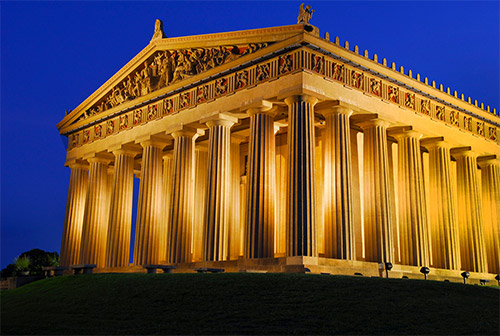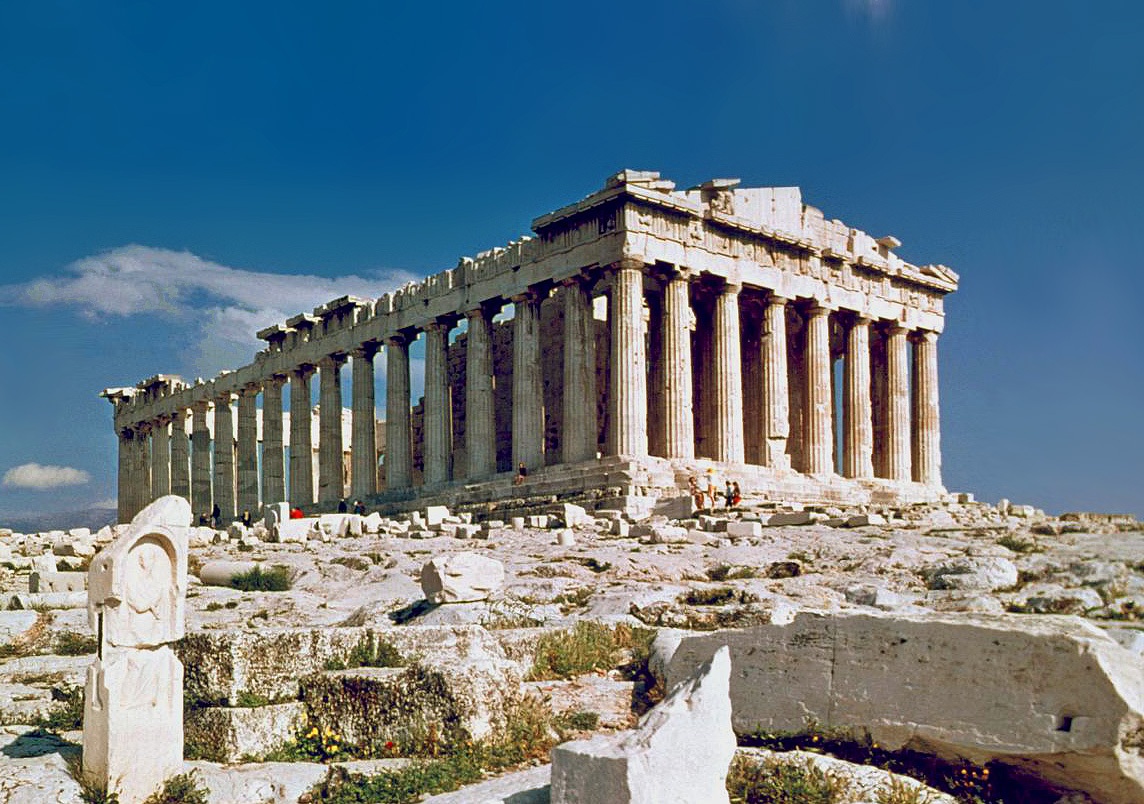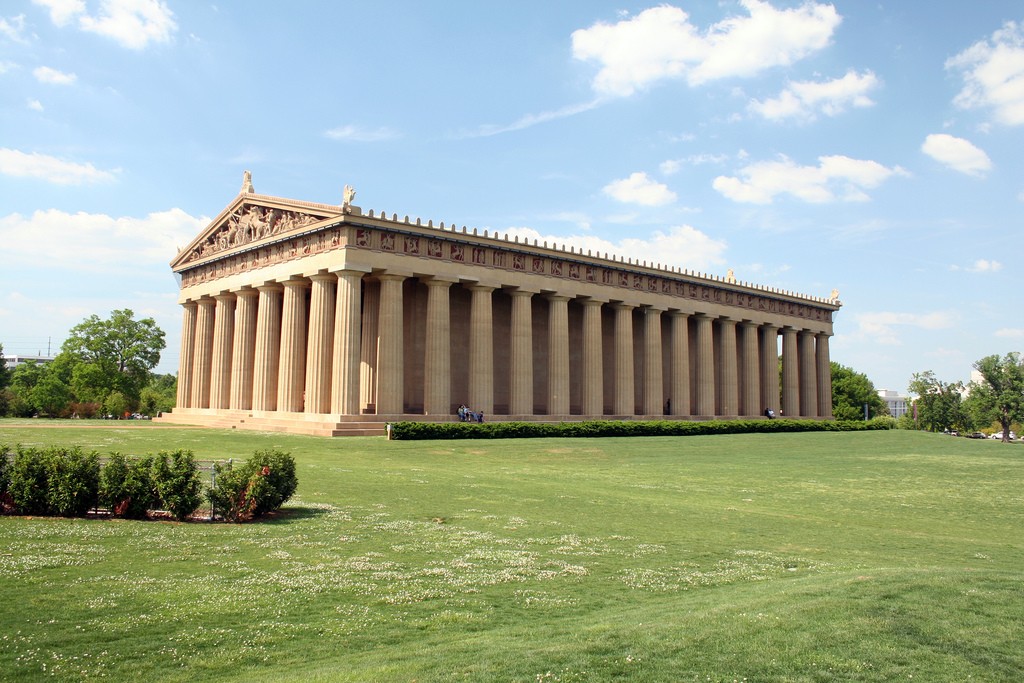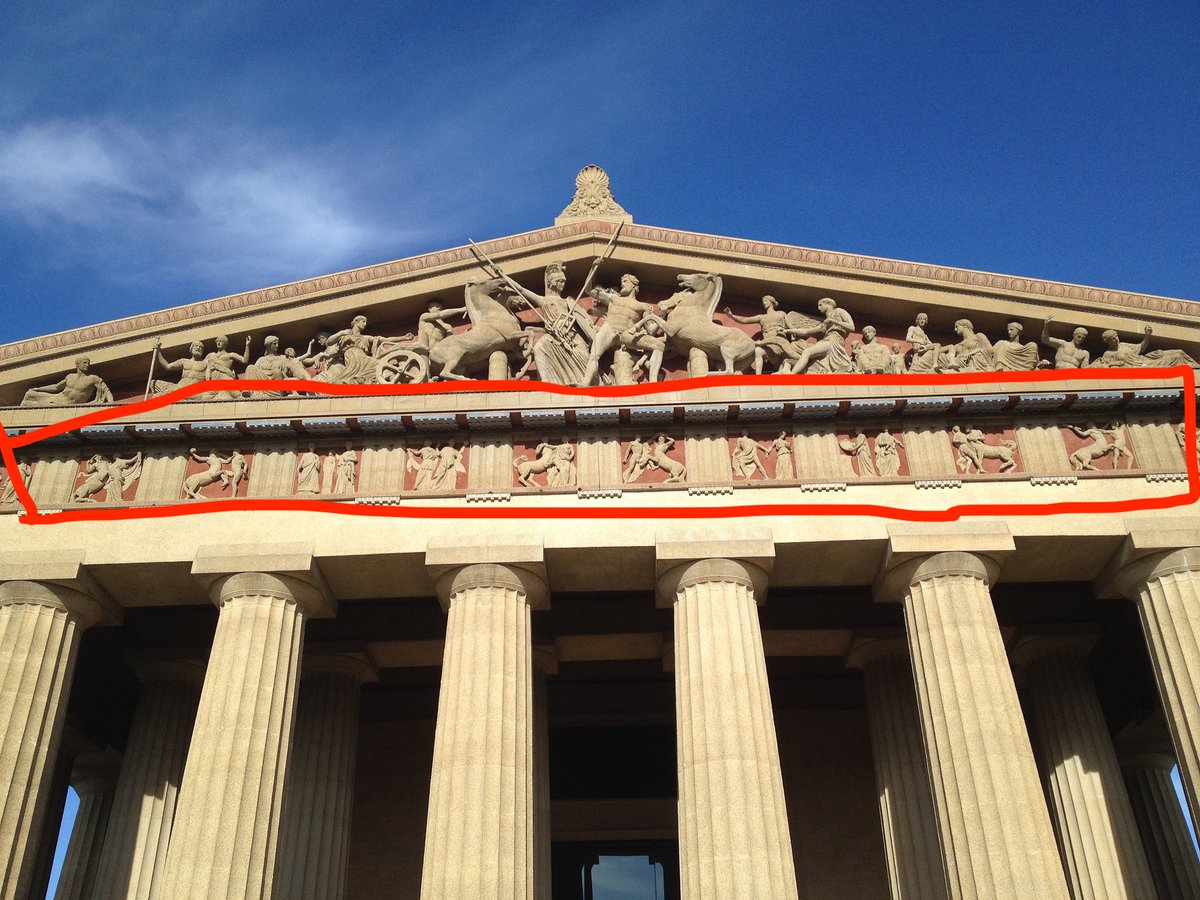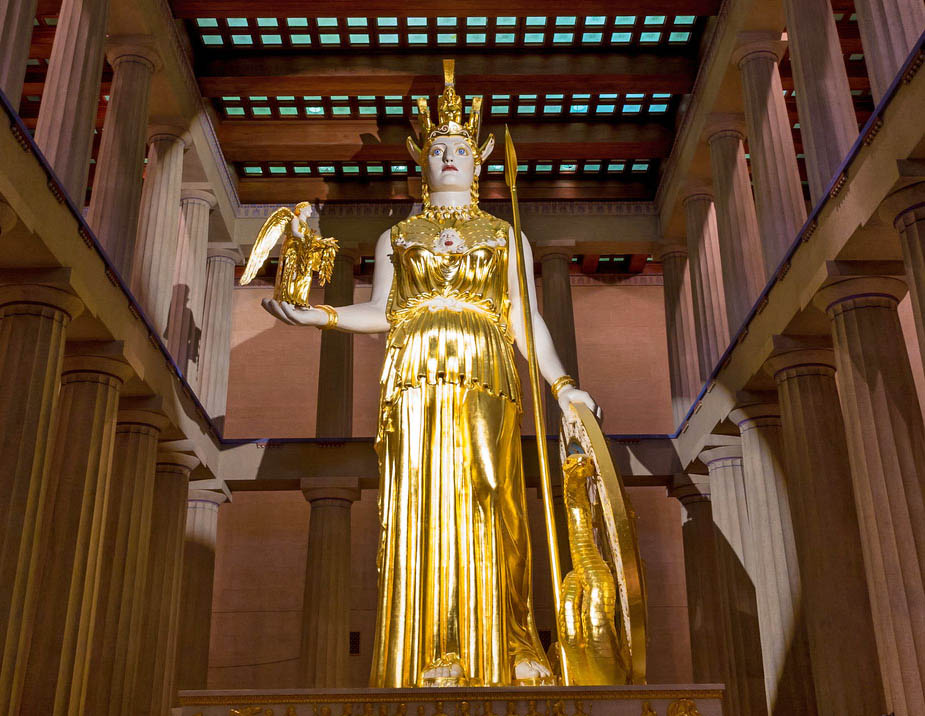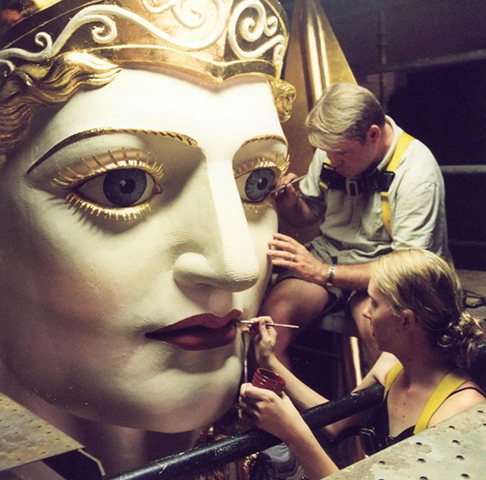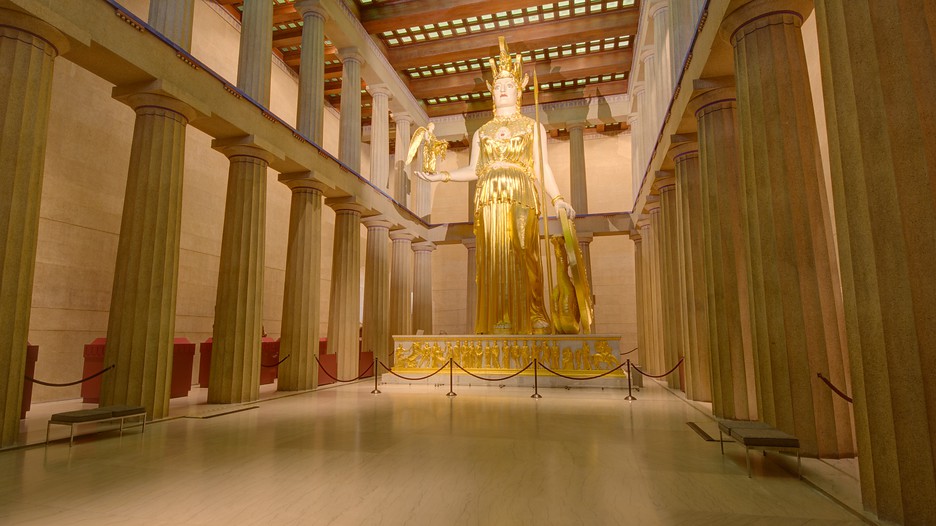#CLST6 #CYO3 In this thread, I’ll be discussing Episode 4 of the Peopling the Past Podcast titled Athenashville: Parallel Parthenons with Katie Petrole. Now Director of Education at the Nashville Parthenon, Petrole played an important role in the Corinth excavations in Greece.
In her interview, Petrole explains the benefits of having a full-scale Parthenon replica in Nashville, Tennessee, she touches upon its origins, and she points out key similarities and differences between this monument and the Parthenon on the Athenian Acropolis.
Completed in 1897, the first Nashville Parthenon construction occurred in a time where Nashville was considered the Athens of the West in the United States. Nashville was ahead of other U.S. cities in terms of public education, and it was also seen as an important cultural hub.
Unlike the marble Athenian Parthenon, The Nashville Parthenon is made from reinforced concrete and stands on a brick and stone foundation. However, the material from both monuments gives off a similar honey color.
Another significant difference between the two structures is in the metopes. Unfortunately, only the metopes on the Athens Parthenon’s south side are fully conserved, so the Nashville Parthenon repeats these same metopes on all four sides.
Petrole sees the metope repetition not as a fault of the Nashville Parthenon, but as a strategic adaptation of creating a most realistic replica from the Athenian ruins we see today.
Additionally, the Nashville Parthenon houses a full-scale replica of the lost Athena Parthenos statue that supposedly once stood tall in the Athens Parthenon. Defying expectations, the statue is vibrant and full of color.
Athena’s garments, accessories, and more are plated in gold leaf, and her face is painted with blue and red. Even Athena’s eyelashes are plated with gold, and this attention to detail and vibrancy helps debunk the myth that ancient sculpture was white and plain.
Petrole describes the awe on visitors’ faces when they see the Athena Parthenos replica for the first time; usually, they never expect the statue to be so colorful and illuminating. Nevertheless, Ancient Greek art exhibited just as much color and dynamism.
The interior of the Nashville Parthenon has another interesting element that helps bring sculpture to life. The central floor is just a small step down from the sides of the interior, which would allow for a thin layer of water to best illuminate the Athena statue.
Constructors of the Nashville Parthenon and its sculpture replicas made special efforts to recreate the experience of one walking through the Athens Parthenon in ancient times. Both monuments are the same size with the same architectural proportions.
However, the Nashville Parthenon has an advantage, because disregarding slight inaccuracies, the building isn’t in ruin. Color characterizes the statue, the metopes, and the pediment. Ultimately, the Nashville Parthenon seems to be a living rendition of its older counterpart.
Petrole believes this to be the Nashville Parthenon’s purpose: offering viewers an interactive, captivating, living experience of the past. Instead of leaving the past in the past, the Nashville Parthenon shows us how we can experience the ancient world in the present.
References:
Podcast:
https://peoplingthepast.com/2020/09/29/podcast_4/
Text:">https://peoplingthepast.com/2020/09/2...
A History of Greek Art by Mark D. Stansbury O’Donnell, pp. 247-250.
Podcast:
https://peoplingthepast.com/2020/09/29/podcast_4/
Text:">https://peoplingthepast.com/2020/09/2...
A History of Greek Art by Mark D. Stansbury O’Donnell, pp. 247-250.
References (cont.)
Images:
https://www.nashville.gov/Parks-and-Recreation/Parthenon.aspx
https://www.nashville.gov/Parks-and... href=" https://theculturetrip.com/north-america/usa/tennessee/articles/the-athens-of-the-south-a-brief-history-of-the-nashville-parthenon/
https://theculturetrip.com/north-ame... href=" https://www.britannica.com/topic/Athena-Greek-mythology
https://www.britannica.com/topic/Ath... href=" https://en.wikipedia.org/wiki/Parthenon
https://en.wikipedia.org/wiki/Part... href=" https://www.beazley.ox.ac.uk/Sculpture/ashmolean/context/parth-south-metsA074.htm
https://www.beazley.ox.ac.uk/Sculpture... href=" https://www.lequiregallery.com/2019/10/new-lecture-by-alan-lequire-goddess-in-progress-athena-parthenos-in-nashville/
https://www.lequiregallery.com/2019/10/n... href=" https://summer2017.thedude.oucreate.com/uncategorized/cj-chesher-personal-blog-4-the-parthenon-in-nashville/">https://summer2017.thedude.oucreate.com/uncategor... https://www.artsy.net/article/artsy-editorial-full-scale-replica-parthenon-nashville-tennessee">https://www.artsy.net/article/a...
Images:
https://www.nashville.gov/Parks-and-Recreation/Parthenon.aspx

 Read on Twitter
Read on Twitter